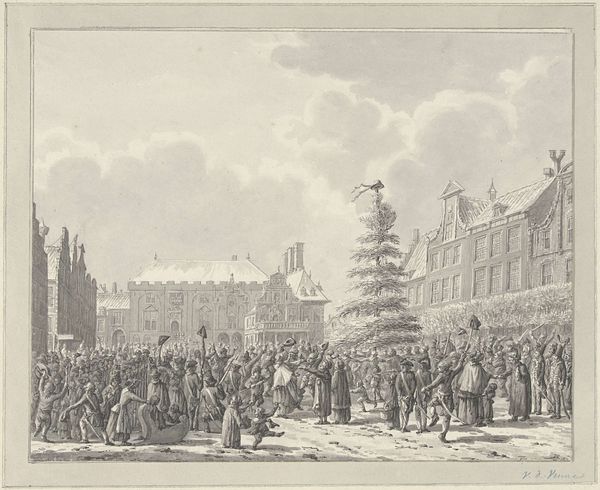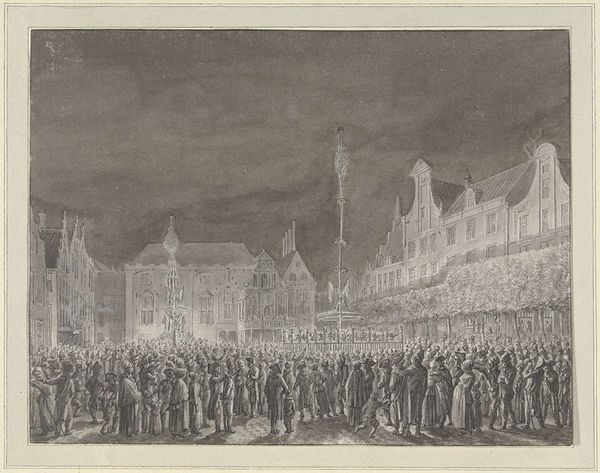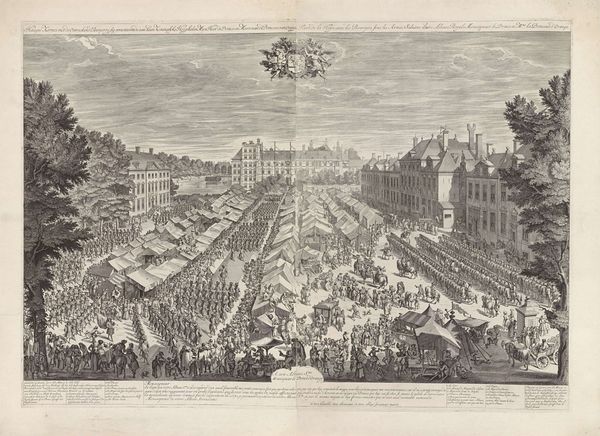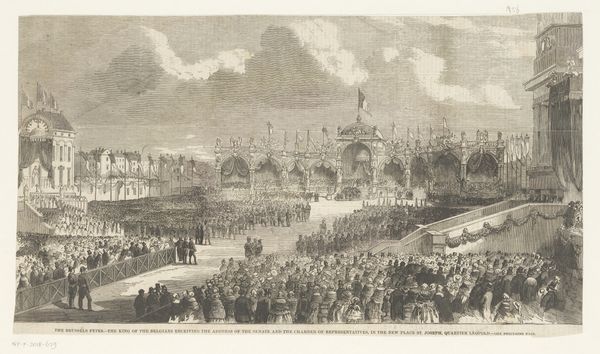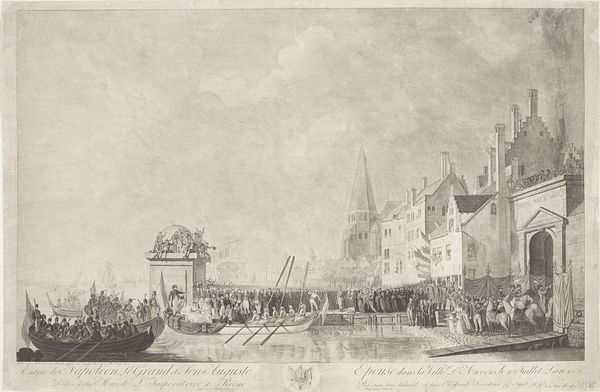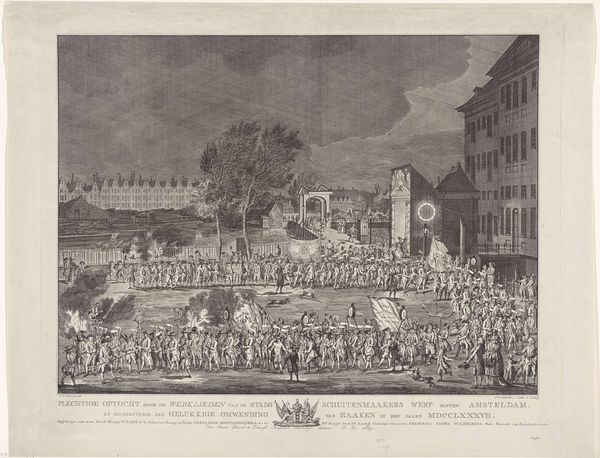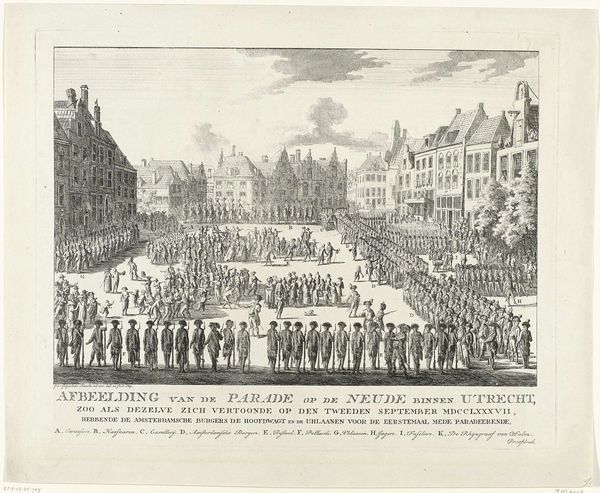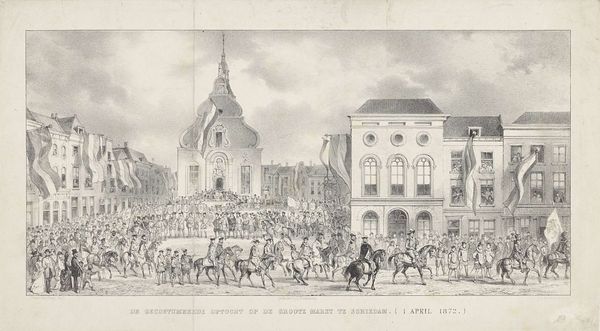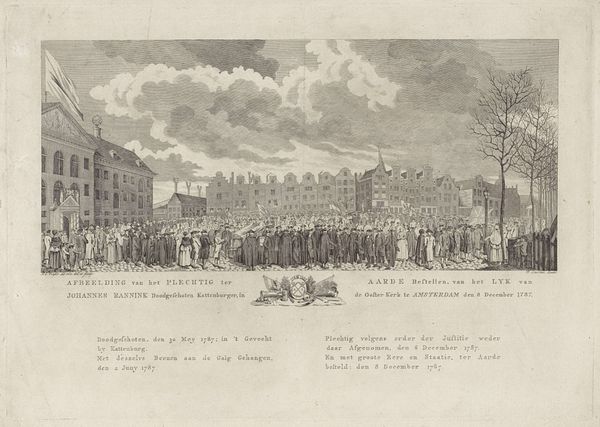
Afschaffing van het Stadhouderschap op de Grote Markt te Haarlem, 1795 1795
0:00
0:00
drawing, paper, ink, engraving
#
drawing
#
neoclacissism
#
narrative-art
#
paper
#
ink
#
cityscape
#
history-painting
#
engraving
Dimensions: height 266 mm, width 340 mm
Copyright: Rijks Museum: Open Domain
Editor: So this is Vincent Jansz. van der Vinne’s "Afschaffing van het Stadhouderschap op de Grote Markt te Haarlem, 1795," created with ink and engraving on paper. There's a real sense of order and civic pride in the image. It makes me wonder, what’s the story behind this event that Van der Vinne captured? Curator: It's an incredibly important moment! This drawing depicts the abolition of the Stadtholderate, a key moment in the Batavian Revolution. Consider the placement of the figures; who are these people gathered, and how do you think Van der Vinne portrays them? It is a neoclassical representation of a pivotal historical event, yes, but what does that mean for how we understand popular power and the construction of a new republic? Editor: Well, there's clearly a military presence maintaining order. And you have all different types of townspeople gathered closely... Perhaps, to convey popular support? The fact that he documented this particular moment seems pretty important. Curator: Precisely. This wasn't just about a shift in power; it was about crafting a narrative of liberation and popular sovereignty, heavily influenced by the Enlightenment ideals then permeating Europe. Note the careful attention to detail – even down to the attire of the crowd members. Can we truly know and account for every demographic that comprised the gathered townspeople, however? It speaks volumes about who the artist believed the revolution was *for.* Who’s included, and who’s been excluded? Editor: That’s fascinating! So, it's not just a historical record but also an argument, shaped by the artist’s own views. I never considered how much interpretation goes into even documentary-seeming works. Curator: Exactly. Examining the context surrounding the artwork invites critical reflection. Looking at art through this lens illuminates whose voices and perspectives are prioritized, even celebrated, and whose might be marginalized. It shows us history is never truly neutral.
Comments
No comments
Be the first to comment and join the conversation on the ultimate creative platform.
